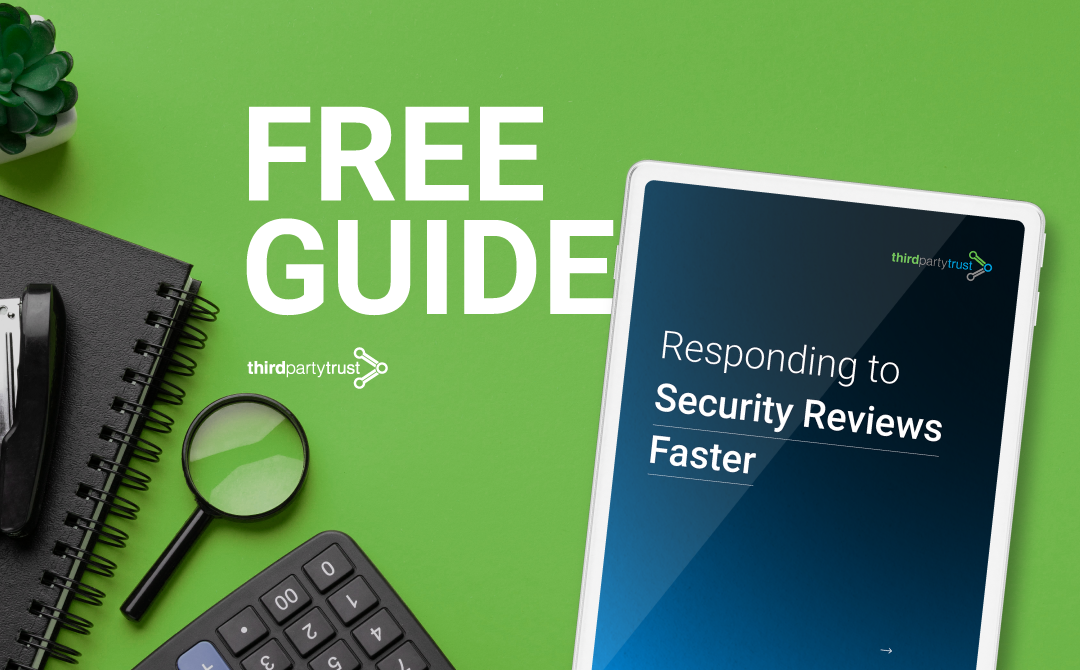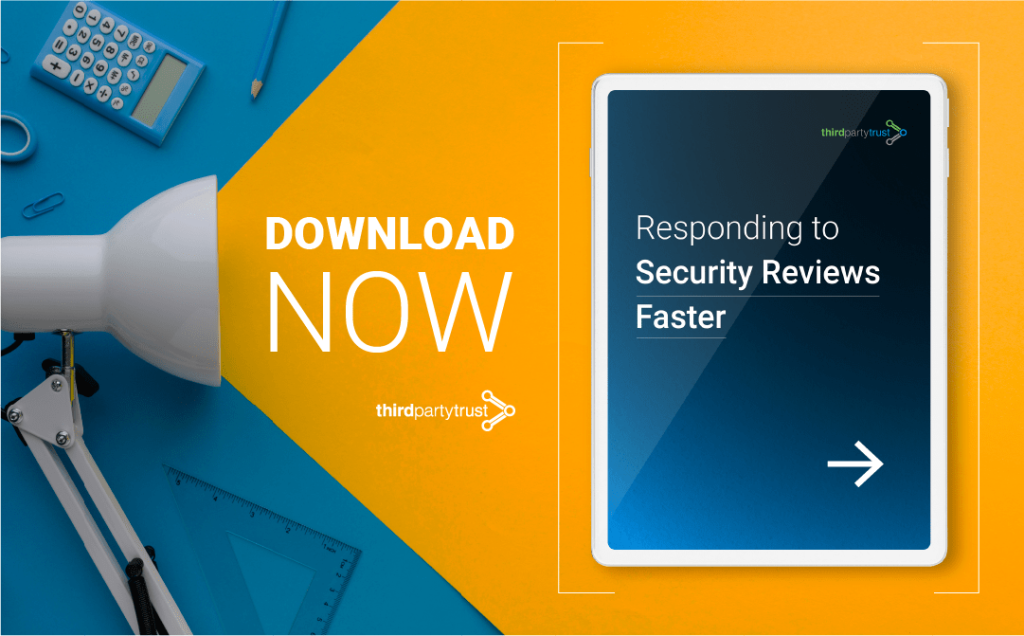The 3 biggest issues for third party vendors answering security reviews —And how to solve them
Vendor risk assessments are as manual and repetitive as they are necessary to do business in the modern world. Enterprises struggle to build scalable workflows to assess hundreds of third party vendors every year, while vendors are forced to respond in a one-off manner.
If you act as a third party vendor to other organizations, due diligence requests from potential customers make their way to your inbox every week. You need to prove your security posture is robust in a timely manner. But as you do so, you find yourself answering the same questions and sending the same documents over and over again.
Third party vendors are on the receiving end of a manual, repetitive and non-scalable process that needs to be reshaped. Our latest strategy guide offers practical solutions to accelerate and solve the biggest pain points around the vendor response process.
The guide, available for free download in this link, is titled Responding to Security Reviews Faster: A Vendor’s Guide to Simplifying Compliance with Risk Assessments.
As a teaser, we’re sharing the three biggest issues we have identified in speaking with GRC and enterprise risk management teams. Plus, our proposed solution to them.
Hopefully, in a world where third party risk management is more urgent than ever, organizations will rely less on spreadsheets with security questionnaires; and more on centralized, automated workflows that allow for collaboration and reduced manual efforts for both sides of vendor risk assessments.
The 3 biggest pain points for third party vendors responding to security reviews —And how to solve them
#1 Lack of control over security documentation → A centralized approach for improved ownership
If too many hands are individually sharing security documents and there’s no central hub for them, chaos arises. However, having all documentation in one place ensures the entire organization represents your company with only the latest, most accurate information.
Creating a single, online and centralized security profile would allow you to digitize and organize all of your documents in one place. The issue of ownership could be easily solved with permissions and user management:
- IT/InfoSec teams can create, maintain and edit the security profile
- Sales can be in charge of connecting with new customers and inviting them to the profile
This gives Sales the freedom and self-sufficiency to incorporate the security documentation into the sales cycle, while Security can focus on what’s really important: cybersecurity, compliance and data privacy practices. Instead of responding to one-off questionnaires every time, they will be involved only when a question or finding is raised by the customer, and will remain the owners of the overall response process and profile maintenance.
This could drastically reduce your workload, as teams could better self-serve in responding to detailed security and technical questionnaires.
Here’s an overview of how a single, centralized security profile can accelerate your response process:
#2 A time consuming and repetitive process → A self-service approach to cut down repetitive tasks
Vendor risk assessments are a part of every sale, but they are time-consuming and expensive to complete. Security has a lot on their plate and they can’t afford to drop everything to focus on compliance with a single deal.
The primary issue to solve in this area is total time from receipt to submission. Currently there are too many hours spent on each questionnaire, but imagine if you could complete a due diligence request in just one business day instead of weeks or months. With centralization of all information security, compliance and policy content, teams could better self-serve in responding to detailed security and technical questionnaires, reducing the overall involvement of Security and Compliance resources.
Streamlining the security response process could allow any organization who acts as a third party vendor to use resources more efficiently, eliminating repetitive tasks.
The centralized profile, based on the Network Approach, enables a scalable response process as vendors respond to more organizations more quickly – without adding bodies to the process. This accelerates communication and allows Sales and Security to focus on what they’re best at.
Think about it this way: no more email back-and-forth or sharing spreadsheets. What if the next time someone asks for a security document, you could just point them in the right direction to find it?
#3 The need to establish trust early on in the relationship → Sharing the vendor security posture upfront and proactively
The Security team is typically called in towards the end of the sales process to review or provide security posture responses that help determine the viability of a partnership. Unfortunately, the manual and repetitive nature of the current process has either killed some deals or delayed the sale for weeks or months.
This could be avoided by starting conversations around security and data handling earlier on in the sales cycle. Instead of waiting to be asked for a certain document or assurance, you could proactively invite the potential customer to your centralized security profile and differentiate from your competitors.
Apart from having more time to work on any compliance issues detected, Security can respond simultaneously as the sales conversations are taking place – no roadblocks on any side.
When it comes to establishing trust, something as simple as sharing a non-disclosure agreement (NDA) upfront can go a long way. It shows that, as a vendor, you take security seriously and it increases transparency. Your customers and prospects should even get automated alerts every time you upload a new pentest, SOC report or insurance certification, and know that you’re staying current.
“ThirdPartyTrust solved the rinse and repeat problem with GRC. It makes third-party risk assessments almost painless
for both sides, and it has created a growing network of vendor profiles to accelerate assessments”.Sean Jackson, Director of Information Security at Spiff Inc
Benefits of ThirdPartyTrust For The Legal Services Industry
- Connect with a third party vendor and instantly see all their relevant and current security data
- Message vendors from within the platform to communicate effortlessly regarding security assessments
- Review third-party certifications, such as SOC, HIPAA, HITRUST, and PCI
- Review completed industry-specific forms such as SIG LITE and CIS 20, LS-ISAO questionnaire, etc.
- Assess third-party insurance policies including cyber, E&O, and general liability
- Access additional intelligence on the third-party’s digital footprint, breach information and financial risk
Ready to step up your third party risk management strategy? Learn how ThirdPartyTrust can help:





